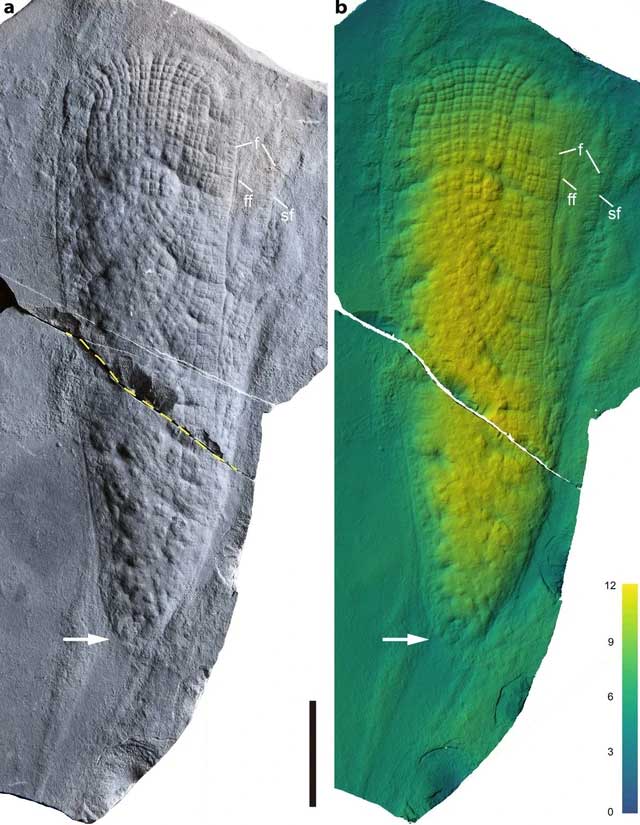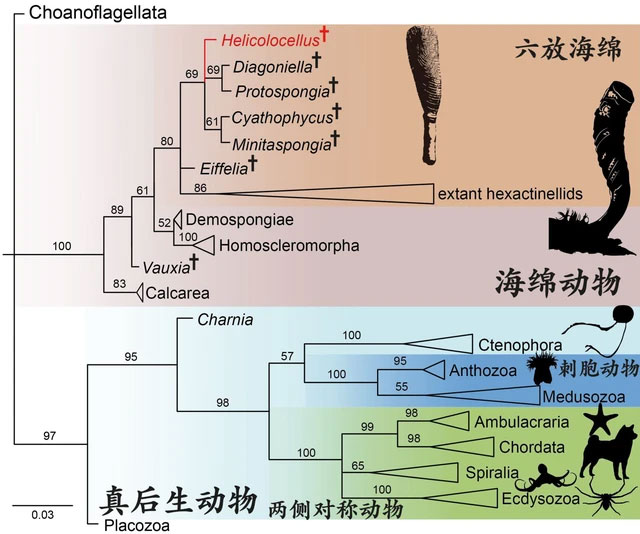According to SciTech Daily, a peculiar organism found in China has been named Helicolocellus by scientists from the Nanjing Institute of Geology and Palaeontology (affiliated with the Chinese Academy of Sciences), representing a pre-Cambrian world that remains full of mysteries for humanity.
This discovery, recently published in the journal Nature, fills an important gap in the evolutionary history of sponges.

Strange 550-million-year-old fossil in China – (Graphic: Yuan Xunlai/SCITECH DAILY)
Sponges are often regarded as the most basic and primitive multicellular animals. Early sponge fossils can provide crucial clues about the origins and early evolution of animals in general, which includes ourselves.
Sponges appeared on Earth approximately 700 million years ago. However, the oldest sponge fossils ever excavated are about 539 million years old, dating back to the beginning of the Cambrian period (541 million – 485 million years ago).

Fossil fragment excavated in Hubei Province – (Photo: NATURE).
However, the world has changed significantly since the Cambrian period began, which also marks the time of the greatest biological explosion on Earth.
The Cambrian period is the start of the Phanerozoic Eon and the end of the Proterozoic Eon. What happened to primitive animals during the Proterozoic Eon remains largely shrouded in darkness.
The 550-million-year-old fossil from Hubei, China, represents one of the organisms from that darkness, an era that scientists refer to as the “lost years.”

The position of the newly discovered organism on the phylogenetic tree is not far from our common ancestor – (Photo: NATURE).
The newly discovered Helicolocellus exhibits morphological traits similar to glass sponges (Hexactinellida), such as a conical body with radial symmetry, a disc-like attachment structure, and possibly a central cavity and drainage canals.
This strange organism also has a surface resembling a mesh, which is also found in some other Cambrian species.
Although their shapes and structures are very similar, the meshes in Helicolocellus are made of organic material, while the meshes in later sponge fossils are formed from biologically mineralized spicules.
On the phylogenetic tree, this peculiar organism is positioned not far from the common ancestor of the animal branch that would eventually give rise to humans and other terrestrial animals.
Therefore, understanding how it evolved and the conditions that influenced this evolution provides crucial clues to explain the early changes in our ancestors as the world transitioned between two eons, contributing to today’s complex evolution.


















































